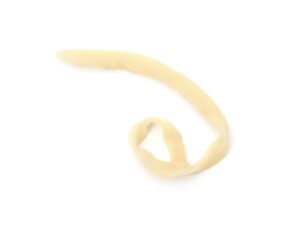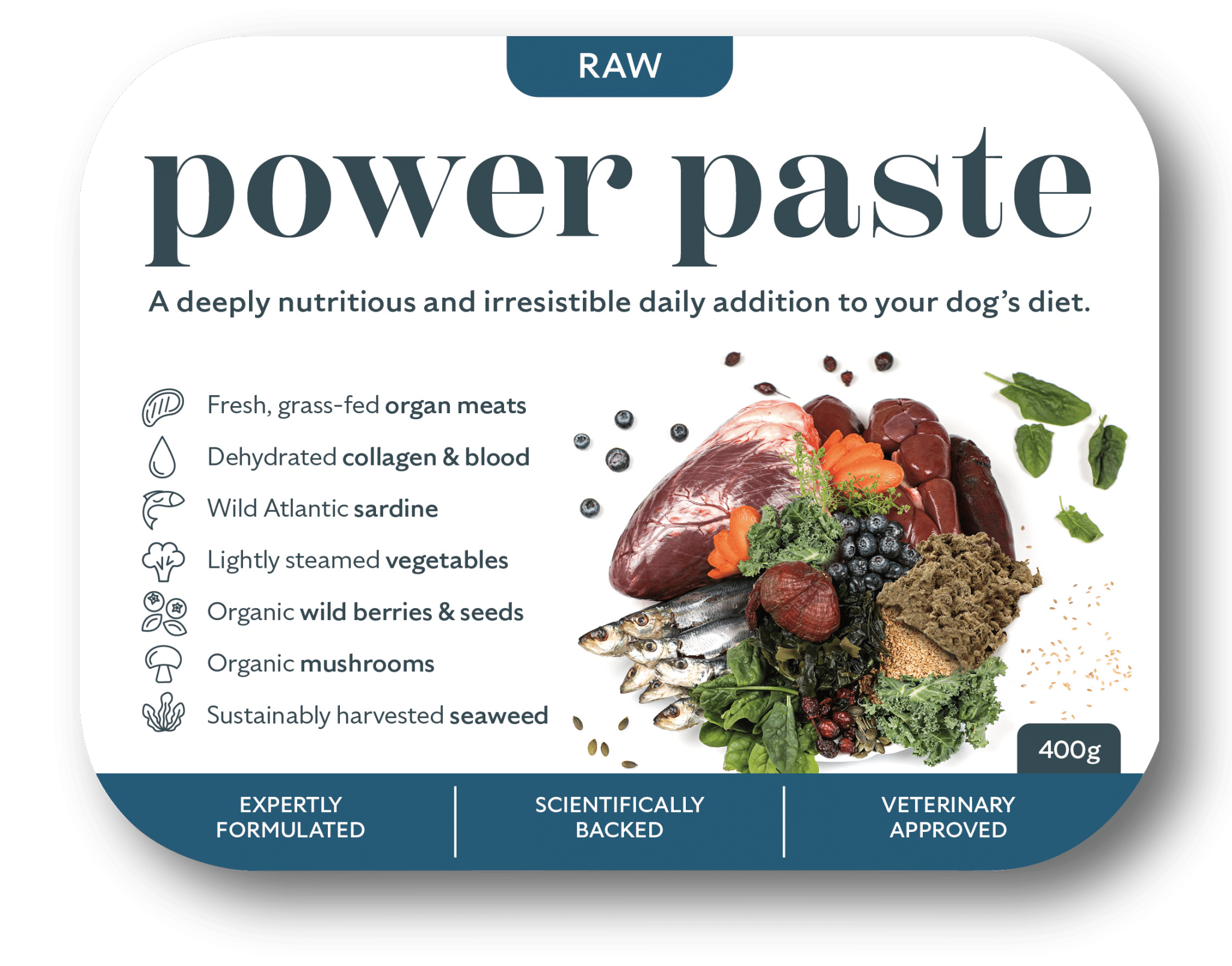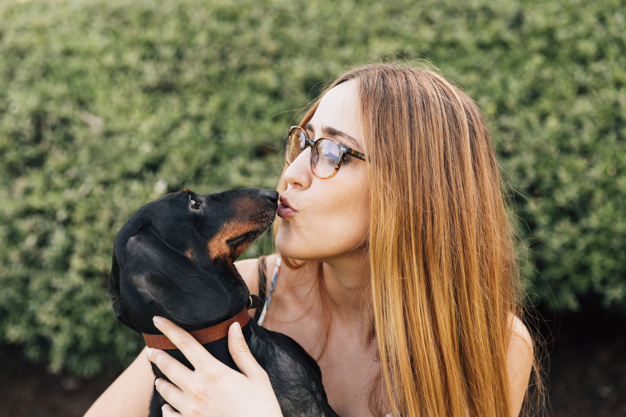Are worms in dogs something to worry about?
Well, here at Dogs First, we’re not huge fans of them because heavy worm burdens, especially in puppies and elderly dogs, can be a concern, but do they warrant regular chemical prevention?
Not necessarily.
Keen to learn more? Of course, you are! So let’s look at worms in dogs, what they are, how dogs get them and signs your dog has them.
Understanding Worms in Dogs
What are worms in dogs?
Worms are small parasites that choose to live in your dog. Where fleas are ectoparasites because they are ecto (meaning outside), worms are endoparasites meaning they live inside the host (your dog).
Worms are a concern in young puppies and elderly dogs as some worms can eat partially digested food; this means they steal vital nutrients from the host dog leading to stunted growth in puppies and anaemia.
But adult dogs can also get worms, so let’s look at them in a little more detail.
Types of Worms Commonly Found in Dogs
Roundworms
Roundworms are parasites that live freely in the intestine, feeding off partially digested intestinal contents. Their name is derived from their tubular or ‘round’ shape. Roundworms are dogs’ most common gastrointestinal worms and can also be transmitted to people. Other animals, such as rodents, earthworms, cockroaches, and birds, can spread roundworm eggs. In these animals, the roundworms are merely transported and do not mature into adults. If your dog eats one of these animals, the roundworm can continue its life cycle.

Roundworms have a tubular or “round” shape.
Hookworms
Hookworms are intestinal parasites that get their name from the hook-like mouthparts they use to anchor themselves to the lining of the intestinal wall. They are about 1/4″ to 3/4″ (1-1.9 cm) long. Despite their small size, they ingest large amounts of blood from the tiny blood vessels in the intestinal wall. A high burden of hookworms can cause inflammation in the dog’s intestine and decrease red blood cells (anaemia). Dogs may become infected with hookworms through ingestion, the skin, the mother’s placenta before birth (in utero), and the mother’s milk.

Hookworms get their name from the hook-like mouthpart
Whipworms
Whipworms are intestinal parasites about 1/4 inch (6 mm) long. They live in the cecum, a pouch that forms the first part of the large intestine and in the actual large intestine of dogs, causing irritation to the intestinal lining. Whipworm eggs are resistant to drying and heat, so they can remain alive in the environment for up to five years.

Tapeworms
Tapeworms are flat, segmented intestinal parasites. They belong to a different family than other intestinal parasites like hookworms and roundworms. The tapeworm uses its hook-like mouthparts for anchoring to the wall of the small intestine. Adult tapeworms can reach up to 11” (30 cm). As the adult tapeworm matures, individual segments (proglottids) break off from the main body of the tapeworm and pass into the dog’s faeces. These segments look just like grains of rice and are about 1/2” (12 mm) long and about 1/8” (3 mm) wide. You may even see them around the anus or in freshly passed poop. A flea larva can ingest tapeworm eggs. Once inside the larval flea, the tapeworm egg continues to develop as the larval flea matures into an adult. Your dog may ingest the flea during grooming or in response to a flea bite. As the flea is digested within the dog’s intestine, the tapeworm egg is released, hatches, and anchors itself to the intestinal lining, completing its lifecycle.

Tapeworms are flat, segmented intestinal parasites
Heartworms
Adult heartworms are found in the heart, pulmonary artery (one of the big blood vessels from the heart), and adjacent large blood vessels of infected dogs. They may sometimes be found in other parts of the circulatory system. Female adult heartworms are 6 – 14″ long (15 – 36 cm) and 1/8″ wide (3 mm). Males are about half the size of females. Adult heartworms may live for five to seven years. During this time, females produce millions of offspring called microfilaria. These microfilariae live mainly in the small vessels of the bloodstream.
A mosquito is needed for the life cycle of heartworm. When a female mosquito bites an infected dog, they ingest the microfilariae during a blood meal. The microfilariae develop further for 10 to 14 days in the mosquito’s gut and then enter its mouthparts. At this stage, they are infective larvae and can fully mature when they enter a dog. The infective larvae enter the dog’s body when the mosquito next bites a dog.
These infective larvae migrate into the bloodstream and move to the heart and adjacent blood vessels, maturing to adults, mating, and reproducing microfilariae within months.
Heartworm infection can lead to heartworm disease.

Adult heartworm removed from a dog.
Lungworm
Dogs can get a lungworm infection by swallowing infective lungworm.
Lungworm larvae require an immediate host, specifically a snail or slug to complete their life cycle. When a dog eats infected larvae, it will mature and complete its life cycle by laying eggs that will hatch in the bronchi. These larvae will be coughed up and then swallowed. They then pass into the environment through the faeces and are picked up by slugs or snails. After the larvae enter the slug or snail, they develop into the infective stage, capable of infecting dogs or other canids. Other dogs can then become infected by eating slugs or snails or another animal, such as a frog, mouse or bird that has eaten a slug or snail.

Lungworm larvae under a microscope
What Do Worm Eggs Look Like in Dog Poop?
Worm eggs are microscopic; if you do manage to spot them, they tend to look like tiny grains of rice.
There are several causes of worms in dogs.
Worms from contaminated soil
When an animal has a worm burden, worm eggs may be passed into their faeces. These eggs can live in the environment for several years. A dog passing through the environment may pick up eggs on their paws, groom themselves, or even eat worm/egg-contaminated soil.
Other animal poop
As we’ve noted, worm eggs may be passed in other animal’s faeces. If you have a poop-eating dog, this could cause worms in your dog. The jury is still out on why dogs eat other animals’ poop – some are firmly on the behaviour fence; for example, generally, your dog receives attention (albeit negative) when they eat animal poop and therefore continue to do it. Others are on the hunger fence – your dog simply does it because they are a greedy eater. Some sit on the deficiency train and liken dogs to rabbits; rabbits eat their own poop to digest what they missed the first time, so maybe dogs do too? Lastly, some believe its ancestral behaviour – a mum would eat their puppy’s poop to keep the den clean, so is it a learned behaviour?
No matter the reason, if your dog eats worm/egg-filled poop, they’re probably getting worms.
Contaminated food
Humans and, therefore dogs can get infected by roundworm or whipworm by eating fruit or vegetables that haven’t been carefully cooked, washed or peeled. As we’ve noted, worms/eggs can pass through animal faeces which can remain in the environment for years. In addition, human excrement is used as a crop fertiliser in some countries.
And whilst we don’t technically call dead animals food, your dog sees them as exactly that. So if your dog scavenges dead animals as food, if the dead animal has worms, your dog may too get worms.
Swallowing fleas when grooming
Sometimes fleas and worms come hand in hand. By swallowing a flea infected with a tapeworm larva, it may develop into an adult tapeworm inside the dog. Your dog may swallow an infected flea when self-grooming or even grooming their pals (cat or dog).

Prevalence of Worms in Dogs
A 2019 study used data from over 39 million faecal samples over 7 years to establish the prevalence of worms in dogs.
Yearly prevalence for canine roundworms from 2012 to 2018 fluctuated slightly, falling from 1.94% in 2012 to 1.77% in 2014, then rising to 1.89% in 2018.
Yearly prevalence for canine hookworms from 2012 to 2018 started at 2.02% in 2012 and reached 2.96% by 2018.
The yearly prevalence of canine whipworms started at 0.83% in 2012 and gradually dropped to 0.67% by 2018.
Signs of Worm Infestation in Dogs
In some cases of a low burden, many dogs won’t show any signs or symptoms that they have worms.
Signs of a worm burden can include:
- Diarrhoea
- Scooting across the floor
- Vomiting
- Swollen abdomen
- Lethargy
- Blocked intestine (in severe cases infestations)
But you will notice different signs and symptoms depending on the worm:
In puppies, signs of roundworm infection include stunted growth, a pot-bellied appearance, and recurrent diarrhoea.
In hookworm burden, some dogs experience weight loss, bloody diarrhoea, dull and dry coat, or, in puppies, failure to grow properly. Skin irritation and itching, especially of the paws, caused by larvae burrowing into and along the skin can also be signs. Dogs may also cough.
Whipworm infection often causes bloody diarrhoea and weight loss.
The symptoms of a lungworm infection depend on the number of parasites found in the lungs, the dog’s immune status, and the infection’s site. Symptoms can include increased breathing rate, coughing or sneezing, wheezing, respiratory distress, or exercise intolerance. Symptoms are generally caused by the body’s reaction to the parasites. Sometimes, there aren’t any visible symptoms of the disease, and the infection may be discovered as an “incidental finding” when you’ve attended the vet for another reason.
How to Know Your Dog Has Worms?
Examination of dog poop
Whilst the naked eye can see some eggs, you may not always spot a worm burden in your dog’s poop. If you see small grains of rice in your dog’s poop, you may want to run a worm count to establish which worm/s are present and treat them accordingly.
Veterinary examination
Vets can assess signs and symptoms of worm burden, but the only way to know your dog has worms is to run a worm count. For most healthy dogs, you can purchase and fulfil this test yourself.
If you are worried that your dog has a high burden of worms with concerning symptoms, then consult your holistic vet to help advise on the next steps.
Worm Count Tests
Several companies take a sample of your dog’s poop, run some swanky tests and email you to let you know if your dog has any intestinal parasites. Well, full disclosure, you pick up the poop sample, squash it into a sample box, post it at your local post office and wait for them to do their thing. It doesn’t sound glamorous, but dear friends, it is one of the best things you can do to optimise your dog’s health. The results you get will identify the worms present (if any) so you can target those pesky parasites only. If the result is clear, there is no treatment required.

How to prevent worm infestation in dogs
In the next article we will cover natural preventatives and treatments for worms in dogs, and discuss in further detail, why we do not recommend regular chemical dewormers and the risks that these can pose. We will also discuss times when chemical treatments may be necessary and how to support your dog if these are unavoidable.
Support your dog’s gut with BioFunction8
Frequently Asked Questions
Can humans get worms from dogs?
Hookworms and roundworms, for example, are zoonotic. This means they can be transmitted from animals to humans. But we humans can also get worms from contaminated food and soil, just like our dogs can.
Can Worms Cause Black Stools in Dogs?
Black stools can indicate bleeding somewhere in the upper digestive tract, and so black-tar-like stools can be a sign of hookworm, for example. As a hookworm detaches from the intestinal wall, the attachment site may continue to bleed.
However, black/dark stools can also indicate too much tripe and/or offal in a raw-fed dog, so be mindful of this too.
Can Worms Cause Diarrhoea in Dogs?
Worms certainly can cause diarrhoea in dogs. Vomiting and diarrhoea are mechanisms to get whatever is in the body out, and the body doesn’t particularly like sharing its resources with parasites. To this end, a dog with worms may vomit and/or have diarrhoea.
That said, there are many other reasons for diarrhoea in dogs, from a simple food change to stress, food sensitivities or eating something they shouldn’t when out on a walk.
How long do worms live in dog poop?
This will vary depending on the worm type, but some can survive in the environment for 5-7 years. This is why most public health authorities are so proactive with poop-scooping behaviour. Just remember to use biodegradable bags and for the love of all things dog, don’t bag it and then hang it in a tree.
What are white worms in dog poop?
The white worms you tend to notice in dog poop are more commonly tapeworm segments. These worms are flat, white worms made up of many segments. When you spot them in poop, they look like grains of rice.
Consult with Me
Worms are parasites, which are organisms that live inside a host (your dog), getting their food from the host or at the expense of the host. To this end, they are not something we want our dogs to share their lives with.
Like every other parasitic invasion, the best protection is a healthy dog, so if you want to optimise your dog’s immune system through nutrition and other lifestyle adjustments, book a consultation with Dr Conor today.















